In many cases, elephants are treated quite badly in Thailand – used for illegal logging, tourist shows, or street begging. The Elephant Nature Park cares for more than 30 elephants, many of whom were previously mistreated. Groups of visitors can feed and interact with certain elephants, but the elephants otherwise spend their time wandering relatively freely within the grounds of the sanctuary.
Upon arrival at the sanctuary, we started out by feeding the elephants. They eat a bunch!
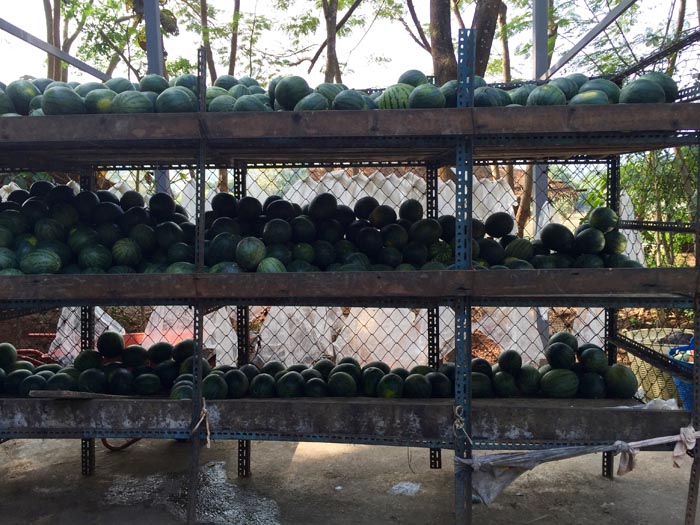
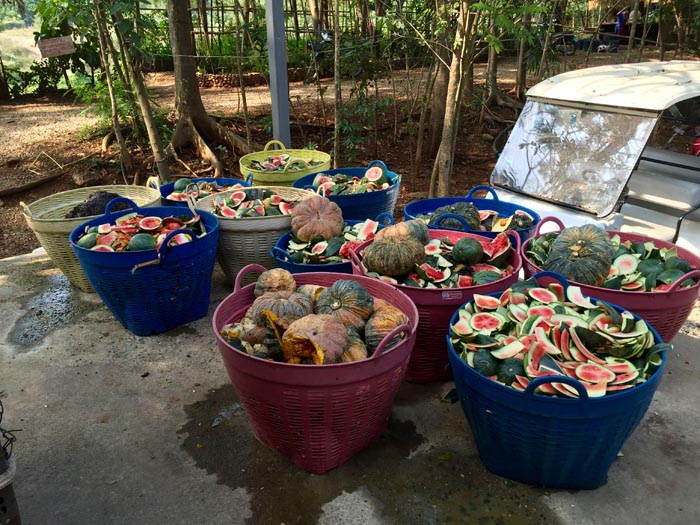
At first, Theo wasn’t sure about letting the elephant take food from his hands.
Later though, he definitely got the hang of it. By the time we were feeding the elephant below, he was darting in and out between the legs of this particularly sweet elephant to obtain and deliver watermelon and squash. (“He’s Thai,” our guide said about Theo, because of his comfort around the elephant.)
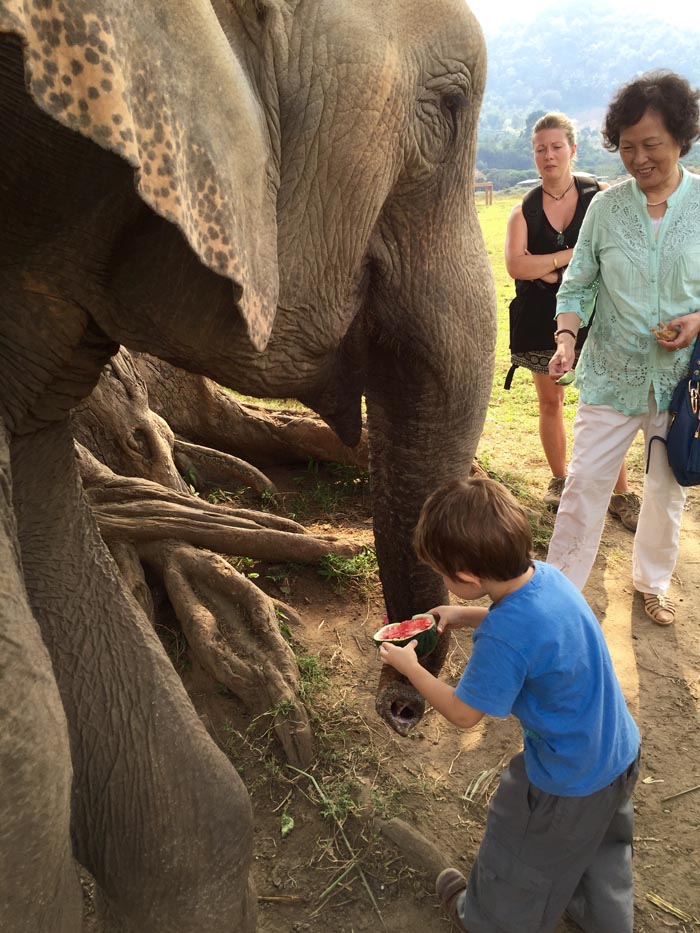
Each time we would approach an elephant, our guide would give us a little information about its past (often heartbreaking) and tell us if and where it was safe to touch the elephant. Because of their past abuse, some elephants couldn’t be touched at all. Others could only be touched on the trunk.
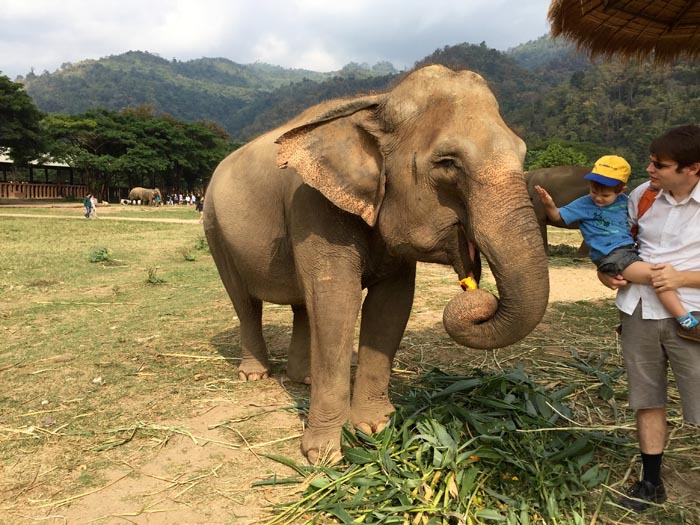
Random interesting fact: older elephants, like this one, in her 70s, have rougher skin.
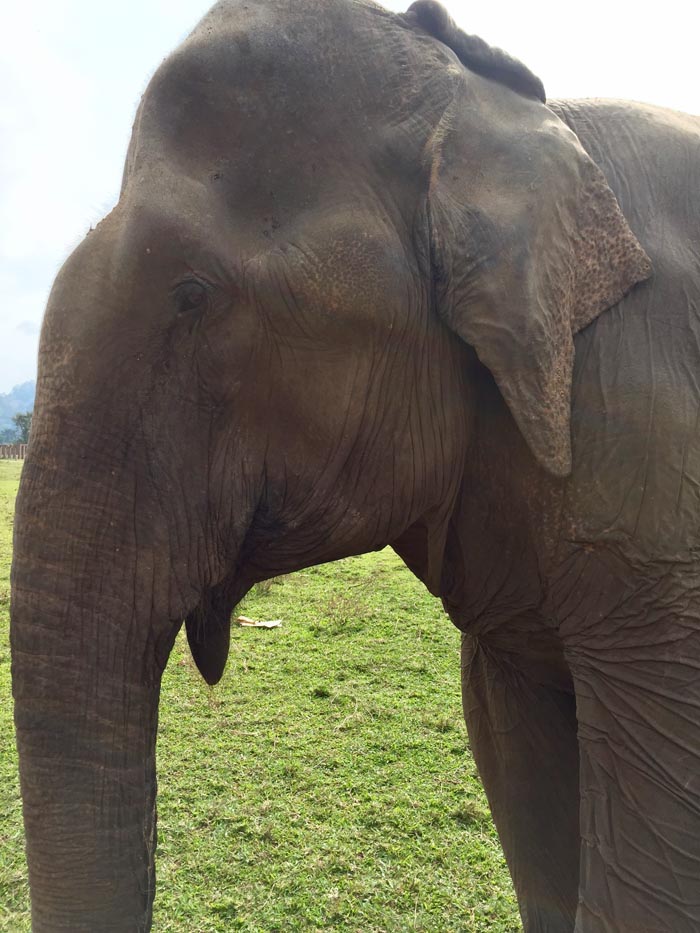
In the afternoon, we bathed an elephant in the river. 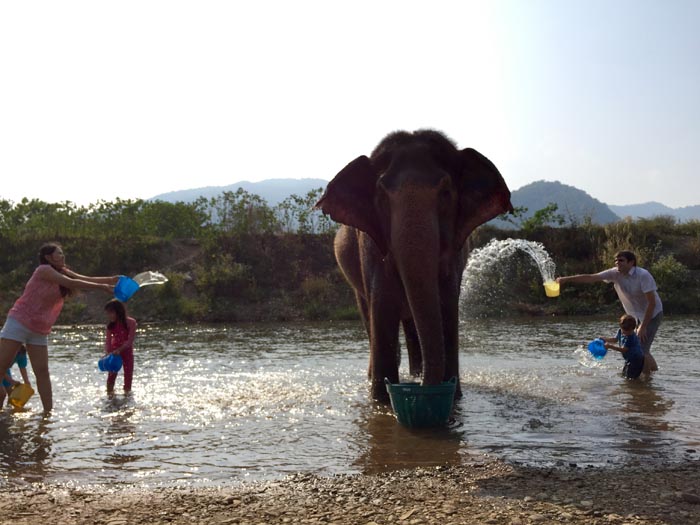
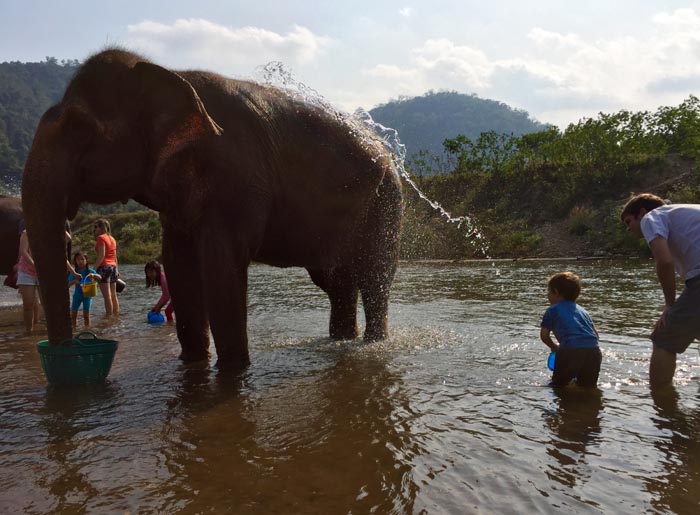
After bathing, some elephants reapplied the proper amount of dust to their backs.
This elephant is a year younger than Theo and had about the same energy level. Our guide told us that it was showing off after its bath.
If you’re in Chiang Mai, I definitely recommend registering to visit the Elephant Nature Park. It’s a humane way to interact with elephants amid the mass of less-kind options nearby, and your fees go to support the feeding and care for the animals at the sanctuary.
